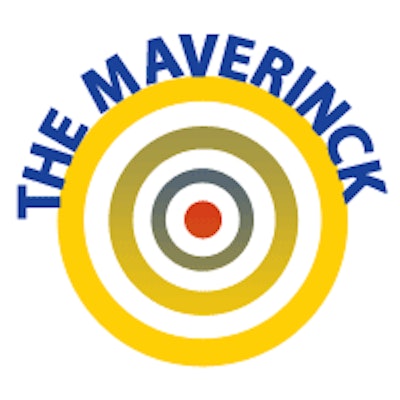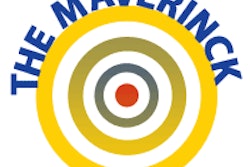
The recent Volkswagen scandal reflects a general trend that, most likely, is as old as mankind. It's a typical confidence trick: Company engineers faked the exhaust results of more than 11 million of their diesel cars. They were found out by somebody who checked their measurements and tried to reproduce them: the measurements were wrong. Instead of developing a better diesel engine, some Volkswagen engineers invested a lot of energy and enthusiasm into sophisticated software faking "clean air."
 Dr. Peter Rinck, PhD, is a professor of diagnostic imaging and the president of the Council of the Round Table Foundation (TRTF) and European Magnetic Resonance Forum (EMRF).
Dr. Peter Rinck, PhD, is a professor of diagnostic imaging and the president of the Council of the Round Table Foundation (TRTF) and European Magnetic Resonance Forum (EMRF).There are numerous facets of this affair that also apply to medicine and radiology; let's once more look at a very important one: publications in journals, both original research, but also review papers. During the last 20 years I have written a number of columns on many aspects of radiological and scientific publications; I have reread them before writing this comment to not repeat what I said before.1-7 However, a lot of arguments should be repeated, over and over again -- until there is a reaction. The law won't or can't touch the culprits; we have to try to redress the problems ourselves.
Reproducibility of results is one of the major prerequisites of good scientific papers. My estimation is a majority of all medical research papers cannot be reproduced by other investigators, because there is no clear description of the methods used. The cause in most cases is lack of the bare fundamentals of research -- dilettantism is common at most universities, but also misconduct, manipulation of data, or even straightforward fraud. Plagiarism is still widespread, though it seems to be on the retreat.
Many people have completely lost their faith in medical research, even if the results are published in Science or Nature -- or Radiology. There are certain "excellent" institutions whose publications are known to be balderdash.
Last year, the Lancet -- a well-known U.K. medical journal -- published a series of five articles on increasing value and reducing waste in biomedical research. In an abstract of one of these papers, the authors point out:
In this report, and in the Series more generally, we point to a waste at all stages in medical research ... Studies of published trial reports showed that the poor description of interventions meant that 40-89% were nonreplicable.8
Papers whose methods cannot be replicated are not scientific papers. They should not be accepted for publication. This means the majority of radiological papers could be rejected before review. This would be an approach to start cleaning up the explosion of research papers and journals.
However, hardly anybody is interested in decreasing quantity and increasing quality. The problem is not particularly new, has been discussed often, and everybody is against it -- in theory. However, the financial incentives are too high for everybody involved. On the one hand, there is the anxiety about the personal future of the researcher, about the survival of labs, departments, even universities. This includes journal editors who in most cases were selected by the publishers and thus show an indifference and lack of moral courage to speak up for balanced and honest scientific publications. On the other hand, there are state and EU administrations, and -- most important -- the publishers making money.
The publishing houses count among the main culprits of the decay and decline of scientific publications.
The Lancet, for instance, used to be a solitary outstanding journal; nowadays there are 11 different subdiscipline editions of the Lancet, pushed into the market by one of the major publishing houses in medicine: Elsevier.
Another publisher, Wiley-Blackwell, had a 2015 fiscal year revenue of $1,822 million U.S. (1,605 million euros); research journals alone delivered 4% revenue growth for the year.
However, there is a clear loss of journal quality due to internal restructuring during the last few years. To achieve higher profit margins and increased shareholder value, Wiley-Blackwell has changed priorities from quality scientific editing to outsourcing, cutting payments to qualified staff, and turning to mass production by publishing an ever-increasing number of journals. For the publishing industry, scientific journals exist for the sole purpose of profit, not for the furtherance of knowledge or distribution of scientific information. In many instances, quality is out, quantity is in, although the explosive increase of pulp science (fiction) papers is prone to kill the entire established publishing industry.
Wherever there is easy money, there are copycats. Publishers and editors of "predatory" journals promise immediate peer-reviewed open-access publication on the Internet -- if the authors pay a processing fee.9 Although many of the "predatory" journals are the dregs of the market, they are a growing competition of the established publications.
Thomson Reuters Impact Factors, the halitosis of the publishing industry, has substantially contributed to the negative tendencies in research publications, appealing to greed and vanity -- which moves some researchers to cut corners, fabricate, or fiddle with results, and inflate the list of authors.
How can one stop this trend? Do we really need all this industry around research publications? Major publishers who believe that financial or quantitative growth is the center of their business will not change, nor will those parasite enterprises that pop up all over and pretend to publish peer-reviewed journals on any discipline under the sun.
Many universities have their own publishing branches. Why can't they or other scientific institutions start publishing honest and solid journals -- and guarantee the quality standards every scientist wants? Or, why not create publishing cooperatives -- they also could assure the ideals of scientific publishing, perhaps even better than universities.
To make an important point at the end: We should never forget that most engineers at Volkswagen are reputable, as are most researchers in medicine, radiology included.
Dr. Peter Rinck, PhD, is a professor of diagnostic imaging and the president of the Council of the Round Table Foundation (TRTF) and European Magnetic Resonance Forum (EMRF).
References
- Rinck PA. Publish and you might perish anyway. Rinckside. 1994;5(3):5-6.
- Rinck PA. The front and back of medical journals. Rinckside. 1999;10(4):15-17.
- Rinck PA. Critics line up to pour scorn on impact factor. Rinckside. 2010;21(3):9-11.
- Rinck PA. Everybody suffers from publishers' thirst for quick profits. AuntMinnieEurope.com. http://www.auntminnieeurope.com/index.aspx?sec=nws&sub=rad&pag=dis&ItemID=605102. 18 May 2011. Accessed 20 October 2015.
- Rinck PA. The copy-and-paste generation: Plagiarism's many faces. AuntMinnieEurope.com. http://www.auntminnieeurope.com/index.aspx?sec=nws&sub=rad&pag=dis&ItemID=608515. 31 July 2013. Accessed 20 October 2015.
- Rinck PA. Why we need less trash and more substantial papers. AuntMinnieEurope.com. http://www.auntminnieeurope.com/index.aspx?sec=sup&sub=mri&pag=dis&ItemID=609451. 4 March 2014. Accessed 20 October 2015.
- Rinck PA. Max Factor -- for the beauty of your curriculum vitae. AuntMinnieEurope.com. http://www.auntminnieeurope.com/index.aspx?sec=nws&sub=rad&pag=dis&ItemID=611797. 17 July 2015. Accessed 20 October 2015.
- Glasziou P, Altman DG, Bossuyt P, et al. Reducing waste from incomplete or unusable reports of biomedical research. Lancet. 2014;383(9913):267-276.
- Berger M, Cirasella J. Beyond Beall's List: Better understanding predatory publishers. College & Research Libraries News. 2015;76(3):132-135.
The comments and observations expressed herein do not necessarily reflect the opinions of AuntMinnieEurope.com, nor should they be construed as an endorsement or admonishment of any particular vendor, analyst, industry consultant, or consulting group.

















